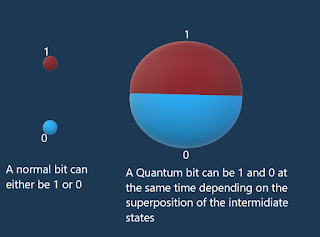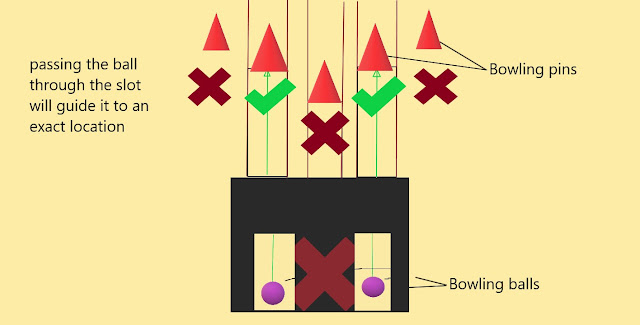The complex understanding of a SPIN !
Let's take a throwback and review some of the orbital parameters.
We said that the atom depends on 3 essential quantum numbers which are n, l, and m representing respectively: the dimension, the shape and the orientation of orbitals.
Unfortunately, these parameters were unable to explain the Zeeman effect that consists, briefly, of approaching a magnet to a light ray and as a result, the pattern of light rays on a screen somehow doubles. The classical parameters seem to be unable to explain this kind of deviation so there must be some hiding facts that it needs yet to be revealed.
One of the most promising experiments that helped to comprehend this phenomenon is the Stern Gerlach experiment. But first of all, I want to clear a misunderstanding that most people fall in:
The experiment consists of putting two magnets vertically where one represents a north pole and the other represents the south pole, the major mistake people often fall in is that these magnets work on none rotational object.
If we consider that the device has an upward south pole and a downward north pole where the south field is stronger and if I put a traditional rectangular magnet in the middle of these two, let's consider some possible cases :
1-If the north pole of the magnet is up then it's attracted to the south of the device so the magnet reaches the maximal possible spot and vice versa.
2-If the magnet is perpendicular to the device then the attractive and repulsive forces are equal so the magnet doesn't budge.
3-If the magnet makes a small angle vis a vis the horizontal plan, then depending on the angle, the magnetic force will be proportional to that angle so the magnet occupies a spot depending on that.
So what we expect is a discrete distribution of that magnet within the device where each one is oriented up or down based on its deviation.
Convinced? You shouldn't because this is completely wrong and the key word that rips this conclusion apart is that the magnetic fields aren't equal in the second case, for example, in the second case the south pole will exercise more force, therefore, twist the magnet until it's completely perpendicular and like the first case it goes completely up in this case all the magnets will end up attracted to the south pole. You can figure what happens in other cases by yourself because all it matters that wherever the case is we will get upward magnets.
This experiment fails excellently in justifying anything. However, things happen completely different from static objects when we use spinning objects or more precisely, objects that have angular momentums.
If we consider a spinning object that isn't aligned vertically and regardless of being oriented vertically or horizontally, the magnetic field tries to orient this momentum towards either up and down donations but here we have to use the rules of classical mechanics and include the notion of Torque. I am not going to deepen the understanding of the torque you can easily find that on Wikipedia but torque is a vector that is perpendicular to the plan of twisting and every time the magnetic fields tries to twist the angular momentum the torque acts so the movement will not alight the vector but give it a rotational motion around the vertical axe which is called the Larmor precession which is proportional to the strength of the magnetic field and the angular momentum ( ω=γB: ω: frequency, B: magnetic force).
Based on this concept, spinning objects would make the device practical, in fact, by putting spinning objects the machine is unable to completely twist the objects and so they are distributed according to their up or down direction of the angular momentum.
So put in mind that the Stern Gerlach machine is designed for spinning objects.
Now let's move to the real experiment where a beam of electrons was projected within the machine. In this case, if electrons had some magnetic capabilities like normal magnets then they would eventually end up all in the stronger pole of the machine. But surprisingly, electrons seem to be distributed equally within the two poles and depending on all the previous conclusion, the electron is spinning or better say, it has an angular momentum. It's not yet proven that spin is a really rotational motion, in fact, this concept poses real serious troubles to classical physics like electrons needing to be bigger to have a magnetic field or the fact that considering them being an infinitely small charged particle like a spot without dimensions, will make them unable to spin... That's why we often attribute the angular momentum, I try to look at things like the example of photons that have a momentum although they don't have any mass.
So electrons are spinning? We're not sure about that and we're not even sure if the Larmor precession works in quantum mechanics, but the sure thing is spin exists and it's somehow essential to complete the Schroedinger's equations.






Comments
Post a Comment